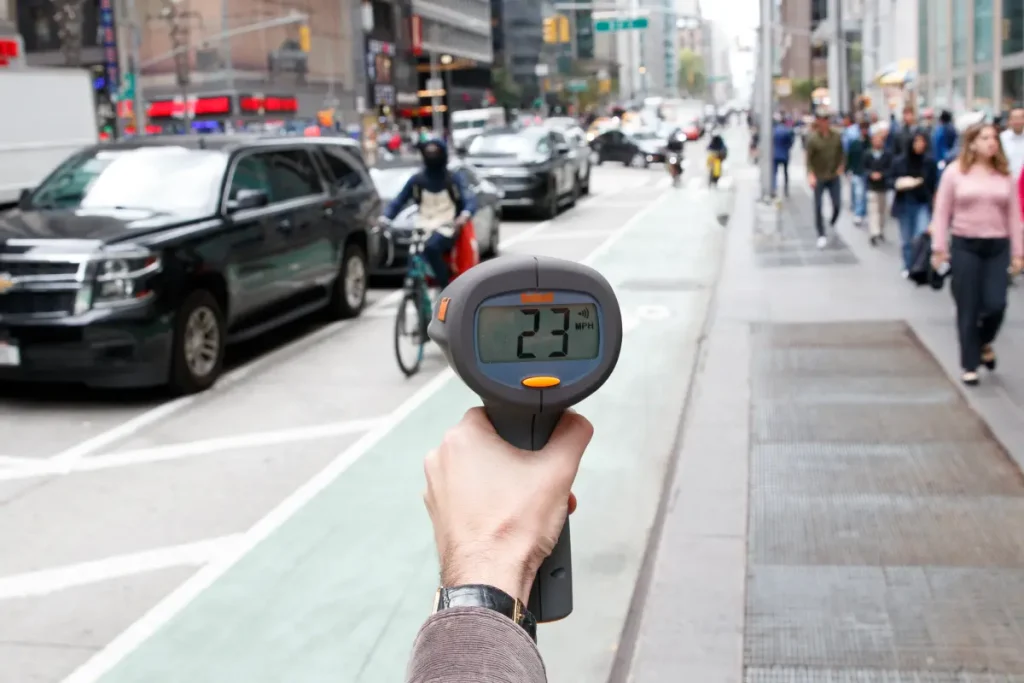New York City’s 15 MPH E-Bike Speed Limit: A Clash of Convenience and Safety
Starting October 24th, New York City will implement a new 15 miles-per-hour speed limit for all e-bikes, e-scooters, and pedal-assist commercial bicycles across the five boroughs, including on pathways inside city-operated parks. This significant reduction—Citi Bikes previously had an 18 mph limit—represents Mayor Eric Adams’ administration’s attempt to address growing concerns about fast-moving delivery riders and recreational e-bike users who have been creating hazardous conditions for pedestrians and drivers alike. The new regulation comes amid rising collision rates, though e-bike fatalities reportedly declined in the first half of this year compared to the same period in 2023. The city’s Department of Transportation and NYPD are preparing an education-first approach, with enforcement as a secondary focus, including new signage along cycling corridors and warnings for first-time offenders.
Yet a recent New York Post investigation using radar guns revealed the substantial challenge ahead for city officials. Reporters documented numerous riders traveling at speeds approaching 23 mph—over 50% faster than the soon-to-be-enforced limit—particularly during busy periods like the midday lunch rush in Midtown Manhattan. These riders were observed weaving dangerously between cars and pedestrians, highlighting exactly the kind of behavior the new regulation aims to curtail. Even more telling was the Post’s findings along the Hudson River Greenway on Manhattan’s west side, where e-bikes are already completely prohibited. Despite prominent signage banning their presence, many e-bike riders were still recorded speeding along at 23 mph, demonstrating a troubling pattern of disregard for existing rules that may forecast similar challenges with the new speed limit.
The economic reality underpinning this situation reveals a fundamental tension. One candid delivery rider interviewed by the Post plainly stated that 15 mph is “too slow” and admitted he wouldn’t follow the new rule. His e-bike currently allows him to travel at 25 mph with pedal assist, and he suggested he could go even faster with more vigorous pedaling. A sympathetic pedestrian explained the financial incentive succinctly: “The more orders they drop off, the more money they make.” This economic pressure creates a powerful motivation to bend or break rules, especially for delivery workers whose livelihoods depend on speed and efficiency. With the gig economy structuring compensation around volume of deliveries, slower speeds directly translate to reduced income for these workers, making compliance with the new limit potentially costly for those who can least afford it.
The enforcement question looms large over the initiative. Mayor Adams emphasized, “This isn’t about criminalization; it’s about creating safer, fairer conditions for all New Yorkers,” but the mechanics of implementation remain unclear. Since e-bikes don’t require registration or display license plates, identifying and tracking repeat violators poses significant challenges. The NYPD plans to issue warnings to speeding cyclists, though primarily as a secondary notice when witnessing other violations. Both the NYPD and Department of Transportation will conduct outreach through LinkNYC kiosks and NotifyNYC push notifications, but skepticism abounds. Queens Councilmember Bob Holden voiced concerns that “without license plates and real enforcement, the danger will only grow.” One rider put it more bluntly: “I don’t know how you’re going to enforce that. We’re in New York, people do what they want.”
The debate has also sparked a counternarrative from the e-bike community, who point to pedestrian behavior as a contributing factor in the rise of collisions. Some riders complain that pedestrians are “always head down on their phones, distracted” and “step out onto the street without even looking.” This perspective highlights the complex urban dance that takes place on New York’s crowded streets, where responsibility for safety is shared among multiple parties. Not all riders oppose the new regulations, however. An e-scooter user who had previously been hit by “a small bus” and “knocked to the ground” expressed support for the 15 mph limit, saying: “Any faster, and it’s really hard to react to potholes, pedestrians, [and] cars.” His firsthand experience with a serious collision informed his view that the lower speed creates a safer margin for reaction time in unpredictable urban environments.
As New York City prepares to implement this significant change to its micromobility landscape, the competing interests of safety, convenience, economic necessity, and practicality of enforcement come into sharp focus. The 11% increase in collisions reported by the NYPD’s TrafficStat underscores the legitimate safety concerns driving this policy shift. Yet the practical challenges of monitoring thousands of unregistered vehicles across America’s largest city, combined with the economic pressures on delivery workers to maximize efficiency, suggest that compliance may be uneven at best. The coming months will reveal whether this speed limit represents a meaningful step toward safer streets or becomes another selectively observed regulation in a city famous for its hustle. What’s clear is that as e-bikes and other electric micromobility options continue to grow in popularity, finding the right balance between convenience and safety will remain an ongoing challenge for urban planners and policymakers not just in New York, but in cities worldwide grappling with the rapid evolution of transportation technology.


